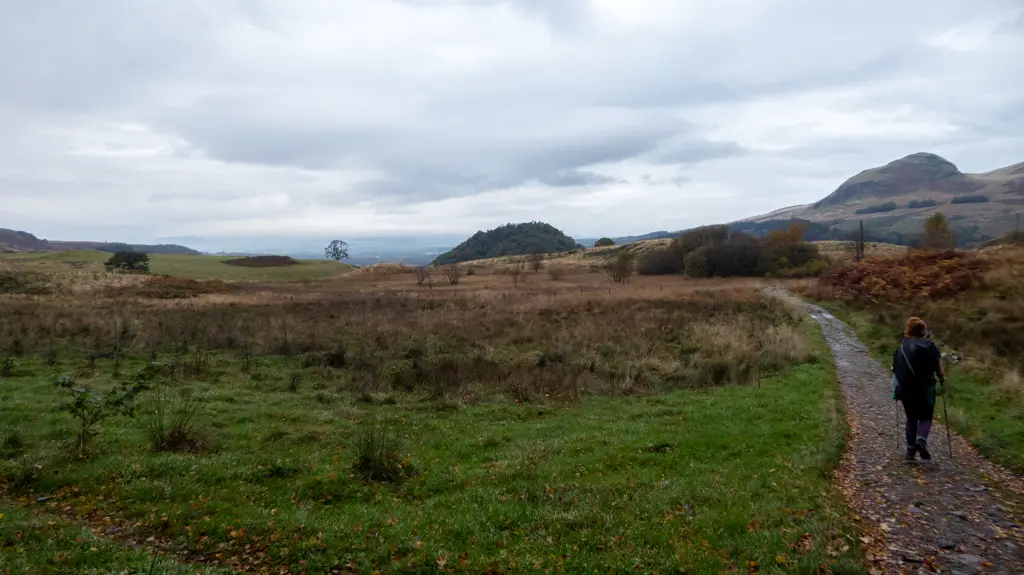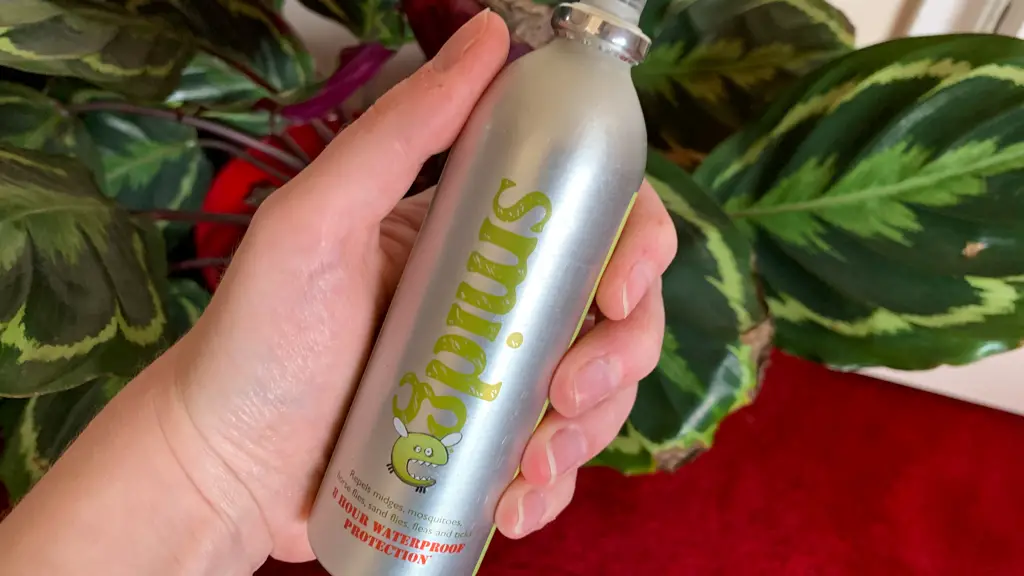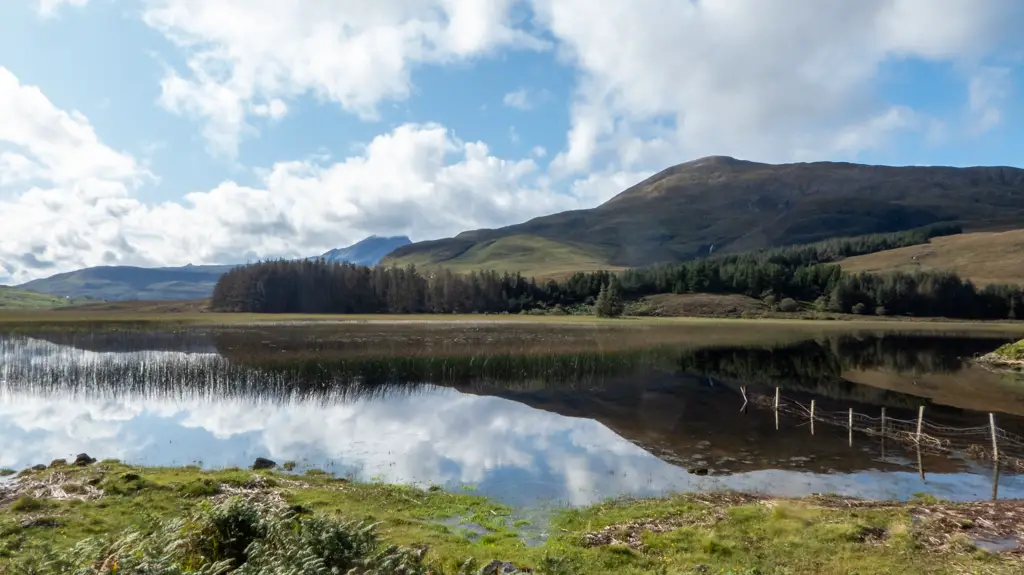It is impossible to talk about outdoor pursuits in Scotland without mentioning the Highland Midge. These wee beasties wreak more havoc than you would assume possible by looking at a rogue one on its own. However, there is no escaping the fact that the midges in Scotland can be the difference between a fantastic trip and a miserable one.
For anyone visiting Scotland, the importance of being clued up on the Highland Midge cannot be overestimated. Don’t worry though, I’ve got you back. After battling with Scottish midges all last summer, I’ll give you the lowdown on when these bugs are at their worst and better still, what you can do to avoid them.
The links to Amazon on this page are affiliate links. As an Amazon Associate Winging the World earns from qualifying purchases.
Read more: (opens in new tab)
- Castles on the Isle of Skye You Need to Visit
- Planning a Visit to the Isle of Skye in winter
- Sligachan Bridge, Isle of Skye
What are midges?
Scottish midges are tiny insects which are pretty bothersome for outdoor enthusiasts. Although midges are found across the earth, the highlands of Scotland are an environment where they thrive, owing to the conditions. Midges enjoy long bracken and acidic soils which feature all over the highlands. The Scottish midge is also one of the biting midges, meaning that they leave itchy lumps for you to contend with for days.
Midges vs. Mosquitos
Sometimes, midges are confused with mosquitos, mainly by those who speak English as a second language. Fear not though, the Highland Midge is not the same as a Mosquito. You may find some mosquitos in Scotland but they will be few and far between.
Mosquitos are significantly larger than midges and although midges bite they don’t carry nasty diseases such as malaria like mosquitoes do. Whilst mosquitos are unlikely to be an issue for visitors to Scotland, you will be pleased to know that many of the leading midge repellents will repel mosquitos as well.
How long do Scottish midges live?
The good news (on paper) is that Scottish midges don’t tend to live that long and are not a problem year-round. They lay their first eggs in bogs during the summer months and then in late spring or early summer (dependent on the weather and temperature), the adults start to hatch.
Why are there so many midges in Scotland?
Scotland and in particular the Highlands offers the perfect environment for midges. They like to lay their eggs in acidic soils with a high peat content and enjoy hanging out in long bracken or on tree bark. This means that western Scotland, in particular, is perfect for them.

There are some good things about the Highland midge though! The presence of midges in these areas means that the Highlands still benefit from a relatively low permanent population. This helps to keep the mountains pristine and in a condition to be enjoyed by everyone.
In other good news, it is only the female midges that bite. This means around half of the midges that you see will probably not bother you at all. It is just those pesky females you need to worry about. Female highland midges hatch with enough fat reserves to lay their first batch of eggs, however, in order to fulfil their second and third batches, they need to feed on a blood meal.
What times of day are Highland midges most active?
Midges tend to be most active in the early morning before the dawn breaks and also in the evenings, once you start to lose the light. Although you can be bitten at any point during the day (sorry to be the bearer of bad news), you are much less likely to get bitten if you avoid the peak times.
Midge Bites
As female midges need to have a belly full of blood in order to lay their second and third batches of eggs, they also need victims. After cutting through the skin with their mouthparts (it really is this horrible, it just happens on a tiny scale), the midge excretes saliva into the cut. This will keep the blood from coagulating which creates a dedicated pool for them to feed from.
Whilst it is possible to notice when you already have become a midges dinner, many of us fail to notice at the time because of the anaesthetic properties of the bite. This means the female will continue to feed until it has had its fill. This can take up to five minutes.
After you have been bitten by a Highland Midge, your body releases histamine at the site of the wound. This makes the bite swell and itch. It has long been argued that Highland midges are more drawn to some people than others and this seems to hold true, although research as to what exactly impacts this is still widely disputed.
Some suggest that the chemical ketone which is hidden in body odour is, in fact, a natural midge repellent. Some people are born with lots of it and don’t get bitten as much, whereas others have much less and are feasted on regularly.
If you have a stronger immune response to the bite, you may get a larger red lump where the bite is, whereas other people may only see small red blotches with no itching. Sadly for me, I fall into the former category which means these itchy red welts rule my life for days on end. That is what inspired me to write this article, as midge bites really can be quite a miserable experience!
How to Keep Highland Midges Away
Okay, so I know that this part of the article is probably why you’re here. The midges are playing havoc with your skin and you want to know how to avoid them. Luckily there is plenty you can do to rid yourself of the menace. Here, I’ll look at planning your trip to avoid midges and the best products on the market to make your trip to the Scottish Highlands as pleasant as it should be.

Best Time to Visit Scotland to Avoid Midges
Midge season tends to begin in May and goes right the way through to September, although the midges can appear earlier and hang around later depending on temperatures. When they first emerge, they will usually be non-biting midges. They only begin to bite around early June. The biting females continue to be present until September.
Whilst you can visit Scotland and avoid midges from the end of September up until April, the best times to visit are either during April through to the end of May, or around September, when the midges are just getting started or dying off. Granted you may miss the best of the weather but you will also get to largely avoid these bitey blighters. I specifically planned my West Highland Way route in October to avoid the midges. This is particularly advised if you are considering camping on the West Highland Way.

The Midge Forecast
The Midge Forecast is a great way to stay up to date with midge levels. This forecast has been created from data taken from biting midge traps across the country as well as mini weather stations. It may help you to plan your visit.
How to Have a Midge Free Visit to Scotland:
- Plan your visit during the months of April, May or September. Winter is also a great time to visit but if you want to do a lot of hiking, you may prefer to come in the drier months!
- Use the Midge Forecast to stay up to date with midge levels.
- Visit indoor attractions on days when Highland midges are more present. For example, on dark and humid days.
- Avoid being outside during dawn and dusk. This is when midges are most active.
- Embrace the wind! If you can contend with a little bit of wind whilst you are outside, you will find that the midges bother you less. Owing to their tiny wingspan, they cannot fly in high winds which makes a boat trip a great option to keep them at bay.
- Cover up when possible. Try to wear loose clothing and long-sleeved tops and trousers.
- Visit the east coast. Whilst I personally think the west coast of Scotland is more beautiful, midge hotspots tend to be in places with the most rainfall. In the case of Scotland, places along the west coast see far more rain than the east.
- Wear light coloured clothes. Midges tend to be more attracted to dark colours which mean more bites. It is also helpful for spotting ticks.
- Invest in a great midge repellent and make sure you’re covered in it before you go out!
Best Highland Midge Repellent
There are lots of products on the market which claim to keep the midges away. My two favourites are:
Smidge spray is available from practically any pharmacy and although fairly expensive at around £8-£9 a bottle, this stuff really works. This is an absolute must for trekking in Scotland! For more information about what to pack when hiking, check out this West Highland Way packing list.

Although not technically advertised as a Highland Midge repellent, the Avon So Soft dry oil spray is one of the best things you can find to keep these wee beasties away.
Aside from the sprays, there are also midge-proof head nets and repellent wipes which might be worth the investment.
Highland Midge Facts
- Scottish midges have a wingspan of just 2mm.
- A midge will need to feed for around five minutes before it is engorged.
- Only the female midges bite.
- Of the 35 different kinds of midge in Scotland, just 5 types of these bite humans.
- Highland midges are attracted to dark coloured clothing.
- Male midges feed on nectar from plants.
- The earliest in the year that they will emerge is April to May, dependent on temperature and moisture levels.
- During medieval times, it was said that Scottish lords would use midge biting as a torture method for their enemies.
- In 2015, Scotland’s tourism industry expected to lose £286 million pounds because of midges.
- Each female midge will lay up to three batches of eggs.
- Midges don’t carry any viruses which are a risk to humans.
- The Gaelic name for midge is ‘meanbh-chuileag’ which means pigmy or tiny fly.

Midge Mania
Whilst midges are undoubtedly flying nuisances, in my opinion, they are not disruptive enough to warrant cancelling your trip to Scotland. This is one of the world’s most beautiful countries with so much to offer visitors. To avoid the midge menace, try to plan your activities to avoid hotspots and make sure you invest in a good repellent. You’ll be out and enjoying Scotland’s wild countryside in no time!


